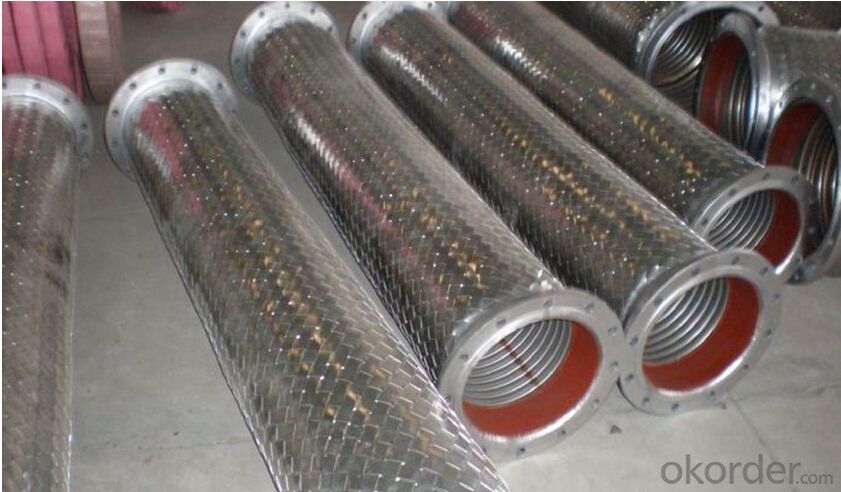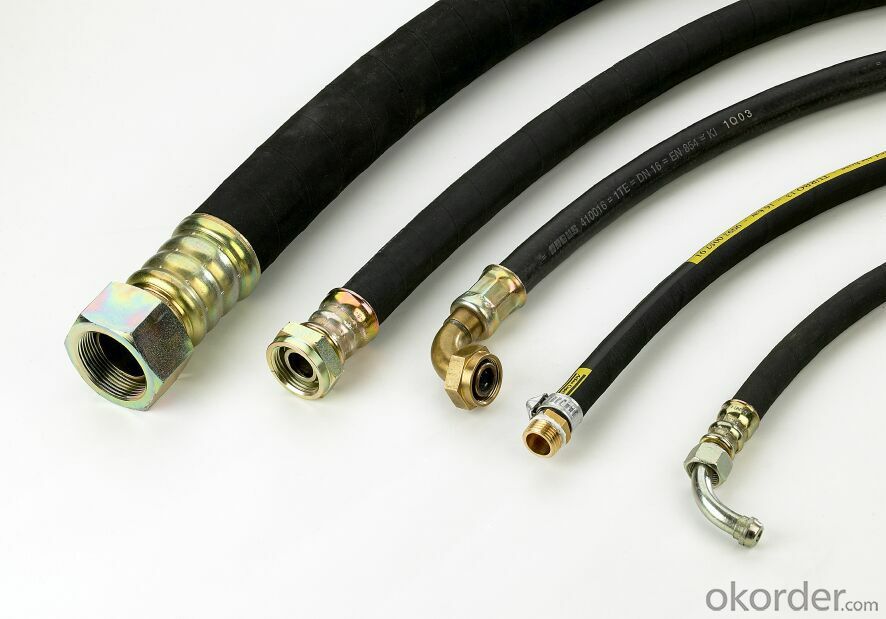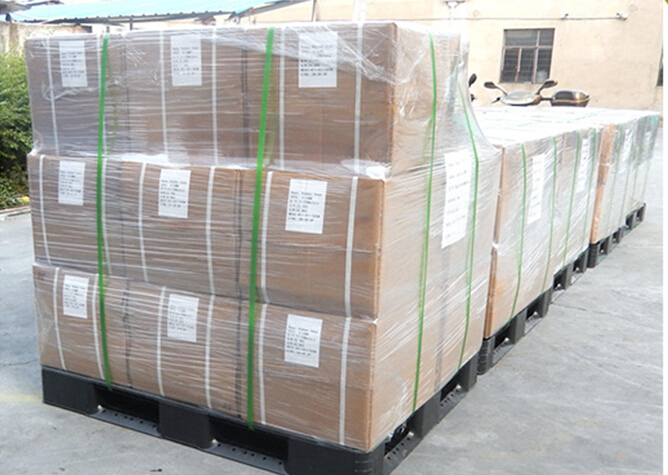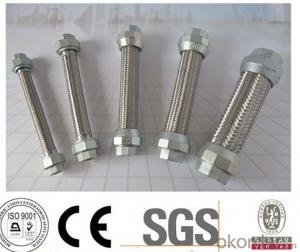Stainless Steel Braid Hose for Construction
- Loading Port:
- Tianjin
- Payment Terms:
- TT OR LC
- Min Order Qty:
- 1000 pc
- Supply Capability:
- 100000 pc/month
OKorder Service Pledge
OKorder Financial Service
You Might Also Like
Specification
Stainless Steel Braid Hose for Construction
Applications of Stainless Steel Braid Hose for Construction:
--Refueling system
--Chemical and pharmaceutical industry
--Industrial hydraulic systems
--Air conditioners in industrial and construction –site vehicles
--Food and beverage industry
--Special and standard industrial applications
--Water and cleaning management
Features of Stainless Steel Braid Hose for Construction:
1. )O. D.: 13-18MM 0.2-3M long
2. )Nut.: Nickel/Chrome Plated Brass (Zinc / Iron / Aluminum is available)
3. )Size Of Nut.: Female&Male 1/2''; 3/4''; 3/8''; 7/8''; 5/16'', and M10...
4. )Insert.: Brass (Zinc / Aluminum / Plastic is available)
5. )Inner tube.: Rubber/ EPDM/PVC
6. )Covered Material: Stainless Steel 201, 301, 304 /Aluminium Wire
7. )Working Pressure: 5Kg-15Kg
8. )Temperature: 0-92° C
9. )Quality Assurance: 3 years
RemarkAPPLICATION: HOUSEEHOLD WARE, BATHROOM WARE, SHOWER HOSE
PAYMENT: T/T, L/C
DELIVERY TIME: 20DAYS OR 30DAYS AFTER RECEIVED 30% DEPOSITS
MOQ: 5000PCS
ODM&OEM IS ACCEPTABLE
PackageInner: PP bag /Blister packing Outer: Carton box
Specifications of Stainless Steel Braid Hose for Construction:
NO | I.D | Refer to O.D | Working pressure | Burst pressure | approximate Weight | |||||
(inch) | (mm) | (inch) | (mm) | MPa | Psi | MPa | Psi | kg/m | lbs/ft | |
1 | 1/8 | 3.2±0.2 | 0.35 | 9±0.3 | 2.06 | 300 | 8.27 | 1200 | 0.078 | 0.12 |
2 | 5/32 | 4±0.2 | 0.4 | 10±0.3 | 2.06 | 300 | 8.27 | 1200 | 0.092 | 0.14 |
3 | 3/16 | 4.8±0.2 | 0.43 | 11±0.3 | 2.06 | 300 | 8.27 | 1200 | 0.108 | 0.16 |
4 | 1/4 | 6.3±0.3 | 0.5 | 12.7±0.3 | 2.06 | 300 | 8.27 | 1200 | 0.134 | 0.2 |
5 | 5/16 | 8.0±0.3 | 0.56 | 14±0.3 | 2.06 | 300 | 8.27 | 1200 | 0.147 | 0.22 |
6 | 3/8 | 9.5±0.3 | 0.63 | 16±0.4 | 2.06 | 300 | 8.27 | 1200 | 0.182 | 0.27 |
7 | 15/32 | 12±0.3 | 0.75 | 19±0.5 | 2.06 | 300 | 8.27 | 1200 | 0.238 | 0.35 |
8 | 1/2 | 12.7±0.4 | 0.78 | 20±0.5 | 2.06 | 300 | 8.27 | 1200 | 0.262 | 0.39 |
9 | 5/8 | 16±0.4 | 0.94 | 24±0.5 | 1.03 | 150 | 4.12 | 600 | 0.351 | 0.52 |
10 | 3/4 | 19±0.4 | 1.13 | 28.8±0.5 | 1.03 | 150 | 4.12 | 600 | 0.515 | 0.77 |
11 | 1 | 25.4±0.5 | 1.38 | 35±0.6 | 1.03 | 150 | 4.12 | 600 | 0.637 | 0.95 |
Images of Stainless Steel Braid Hose for Construction:




Package of Stainless Steel Braid Hose for Construction:


FAQ of Stainless Steel Braid Hose for Construction:
Who we are:
Answer: We CNBM is a Chinese state-owned enterprise ranked 267th among the Global Fortune 500, as the largest building materials company,we have over 300 affiliated companies,and so many production lines and branch office distribute in China.
2. About our quality:
Answer: Every product needs to be quality proved before shipping.
3. About our service:
Answer: We could gurantte that we can reply you in 2 working hours.
- Q: What are the different types of stainless steel pipe supports?
- There are several different types of stainless steel pipe supports that are commonly used in various industries and applications. These include: 1. Adjustable pipe supports: These supports are designed to allow for easy adjustment of the pipe's position or height. They often feature a threaded rod or a telescoping design that can be extended or retracted to accommodate different pipe sizes or installation requirements. 2. Pipe hangers: These supports are used to suspend or hang pipes from overhead structures. They typically consist of a metal bracket or clamp that is attached to a beam or other structural element, and a hanging rod or strap that supports the weight of the pipe. 3. Pipe clamps: These supports are used to secure pipes to walls, floors, or other surfaces. They typically consist of a metal clamp that wraps around the pipe and is attached to the surface with screws or bolts. Pipe clamps can be adjustable or fixed, depending on the specific application. 4. Pipe saddles: These supports are used to cradle or support pipes on horizontal surfaces. They typically consist of a U-shaped metal bracket or saddle that is attached to the surface, and a cushioning material such as rubber or neoprene that helps to prevent damage to the pipe. 5. Pipe guides: These supports are used to guide or control the movement of pipes, particularly in applications where thermal expansion or contraction is a concern. They typically consist of a metal bracket or guide that is attached to a fixed structure, and a sliding or rolling element that allows the pipe to move while maintaining its alignment. Each type of stainless steel pipe support has its own specific advantages and is designed to meet different installation requirements. The choice of support will depend on factors such as the pipe material, size, weight, and the specific needs of the application.
- Q: What are the different types of stainless steel pipe coatings?
- There are several types of stainless steel pipe coatings commonly used, including epoxy coatings, polyethylene coatings, fusion bonded epoxy (FBE) coatings, and polyurethane coatings. These coatings provide various benefits such as corrosion resistance, enhanced durability, and improved performance in different environments.
- Q: Can stainless steel pipes be used for underground irrigation systems?
- Yes, stainless steel pipes can be used for underground irrigation systems. Stainless steel is a durable and corrosion-resistant material, making it suitable for applications where the pipes will be exposed to moisture and soil conditions. It is also a popular choice for underground irrigation systems because it can withstand high pressure and temperature fluctuations. Additionally, stainless steel pipes have a longer lifespan compared to other materials, reducing the need for frequent replacements or repairs. However, it is important to ensure that the pipes are properly installed and insulated to prevent any potential damage from soil movement or other external factors.
- Q: What are stainless steel pipes used for?
- Stainless steel pipes are widely used in various industries for their exceptional durability, corrosion resistance, and high strength. They find extensive applications in plumbing systems, oil and gas industries, chemical processing plants, food and beverage processing, pharmaceutical industries, and automotive manufacturing, among others. In plumbing systems, stainless steel pipes are favored for their ability to withstand high pressure and temperature, making them suitable for transporting water, gas, and other fluids. They are also commonly used in sewage and drainage systems due to their resistance to corrosion and chemical substances. In the oil and gas industries, stainless steel pipes are used for transporting petroleum products, natural gas, and other fluids under high pressure and extreme temperatures. Their corrosion resistance properties make them indispensable in offshore and onshore drilling operations, refineries, and petrochemical plants, ensuring the safe and efficient transportation of these substances. Chemical processing plants rely on stainless steel pipes for their resistance to chemical reactions and high temperatures. They are used to transport various corrosive chemicals and gases without the risk of contamination or leakage. Additionally, stainless steel pipes are utilized in heat exchangers, reactors, and other equipment that require corrosion-resistant materials. The food and beverage industry also heavily relies on stainless steel pipes due to their hygiene and sanitary properties. They are used for conveying various food products, such as milk, wine, beer, and other liquids, without altering their taste or quality. Stainless steel pipes are easy to clean, maintain, and sterilize, making them ideal for this industry. In the pharmaceutical sector, stainless steel pipes play a crucial role in conveying various drugs, chemicals, and sterile fluids. They meet the stringent requirements of the industry by ensuring product purity, preventing contamination, and offering resistance to corrosion and temperature extremes. Moreover, stainless steel pipes are utilized in automotive manufacturing for their structural strength and resistance to heat and corrosion. They are used in exhaust systems, fuel lines, and other components where durability and resistance to extreme conditions are necessary. Overall, stainless steel pipes are versatile and essential in numerous industries, providing the perfect combination of strength, durability, and corrosion resistance needed for a wide range of applications.
- Q: What is the maximum operating temperature for stainless steel pipes?
- The maximum operating temperature for stainless steel pipes can vary depending on the specific grade of stainless steel being used. However, in general, stainless steel pipes are capable of withstanding high temperatures. Austenitic stainless steel grades, such as 304 and 316, can typically handle temperatures up to 870°C (1600°F). Meanwhile, ferritic stainless steel grades, such as 430, have a lower maximum operating temperature of around 760°C (1400°F). It is important to consult the manufacturer's specifications and guidelines to determine the specific maximum operating temperature for a particular stainless steel grade and pipe.
- Q: What is the difference between electropolished and bright annealed stainless steel pipes?
- Electropolished and bright annealed stainless steel pipes are two different surface treatments applied to stainless steel pipes to enhance their properties and appearance. Electropolishing is an electrochemical process that removes a thin layer of material from the surface of the stainless steel pipe. This process helps to remove any impurities, contaminants, or roughness on the surface, resulting in a smooth and highly polished finish. Electropolishing also improves the corrosion resistance of stainless steel by creating a passive oxide layer on the surface, which helps to protect the underlying material from corrosion. On the other hand, bright annealing is a heat treatment process that involves heating the stainless steel pipe to a specific temperature and then cooling it slowly in a controlled atmosphere. This process helps to relieve internal stresses, improve the ductility and toughness of the material, and enhance its mechanical properties. Bright annealing also produces a smooth and reflective surface finish, similar to electropolishing, but without the electrochemical removal of material. In summary, the main difference between electropolished and bright annealed stainless steel pipes lies in the process used to achieve the desired surface finish. Electropolishing involves the removal of material through an electrochemical process, while bright annealing is a heat treatment process that provides a smooth and reflective surface without removing material. Both treatments improve the appearance and corrosion resistance of stainless steel pipes, but bright annealing also enhances the mechanical properties of the material.
- Q: Are stainless steel pipes suitable for chemical processing plants?
- Yes, stainless steel pipes are suitable for chemical processing plants. Stainless steel is highly resistant to corrosion and can withstand high temperatures and pressures, making it ideal for conveying various chemicals in a safe and efficient manner. Additionally, stainless steel pipes have excellent durability and longevity, reducing the need for frequent maintenance and replacement.
- Q: How do stainless steel pipes compare to brass pipes?
- Stainless steel pipes are generally more durable, corrosion-resistant, and have higher heat resistance compared to brass pipes. Additionally, stainless steel pipes are often more cost-effective in the long run due to their longevity and low maintenance requirements. Brass pipes, on the other hand, are known for their excellent conductivity and aesthetic appeal. Ultimately, the choice between stainless steel and brass pipes depends on the specific needs and preferences of the application.
- Q: Can stainless steel pipes be used for gas distribution?
- Yes, stainless steel pipes can be used for gas distribution. Stainless steel is a highly durable and corrosion-resistant material, making it suitable for transporting gas safely and efficiently.
- Q: Can stainless steel pipes be used for chemical processing applications?
- Yes, stainless steel pipes can be used for chemical processing applications. Stainless steel is known for its excellent corrosion resistance, making it suitable for handling various chemicals and corrosive substances. It is resistant to both organic and inorganic chemicals, including acids, alkalis, and solvents. Additionally, stainless steel pipes have high strength and durability, allowing them to withstand high temperatures and pressures commonly encountered in chemical processing operations. The smooth inner surface of stainless steel pipes also prevents the accumulation of deposits and ensures the efficient flow of chemicals. Overall, stainless steel pipes are a reliable choice for chemical processing applications due to their corrosion resistance, strength, durability, and ease of maintenance.
Send your message to us
Stainless Steel Braid Hose for Construction
- Loading Port:
- Tianjin
- Payment Terms:
- TT OR LC
- Min Order Qty:
- 1000 pc
- Supply Capability:
- 100000 pc/month
OKorder Service Pledge
OKorder Financial Service
Similar products
Hot products
Hot Searches
Related keywords






























